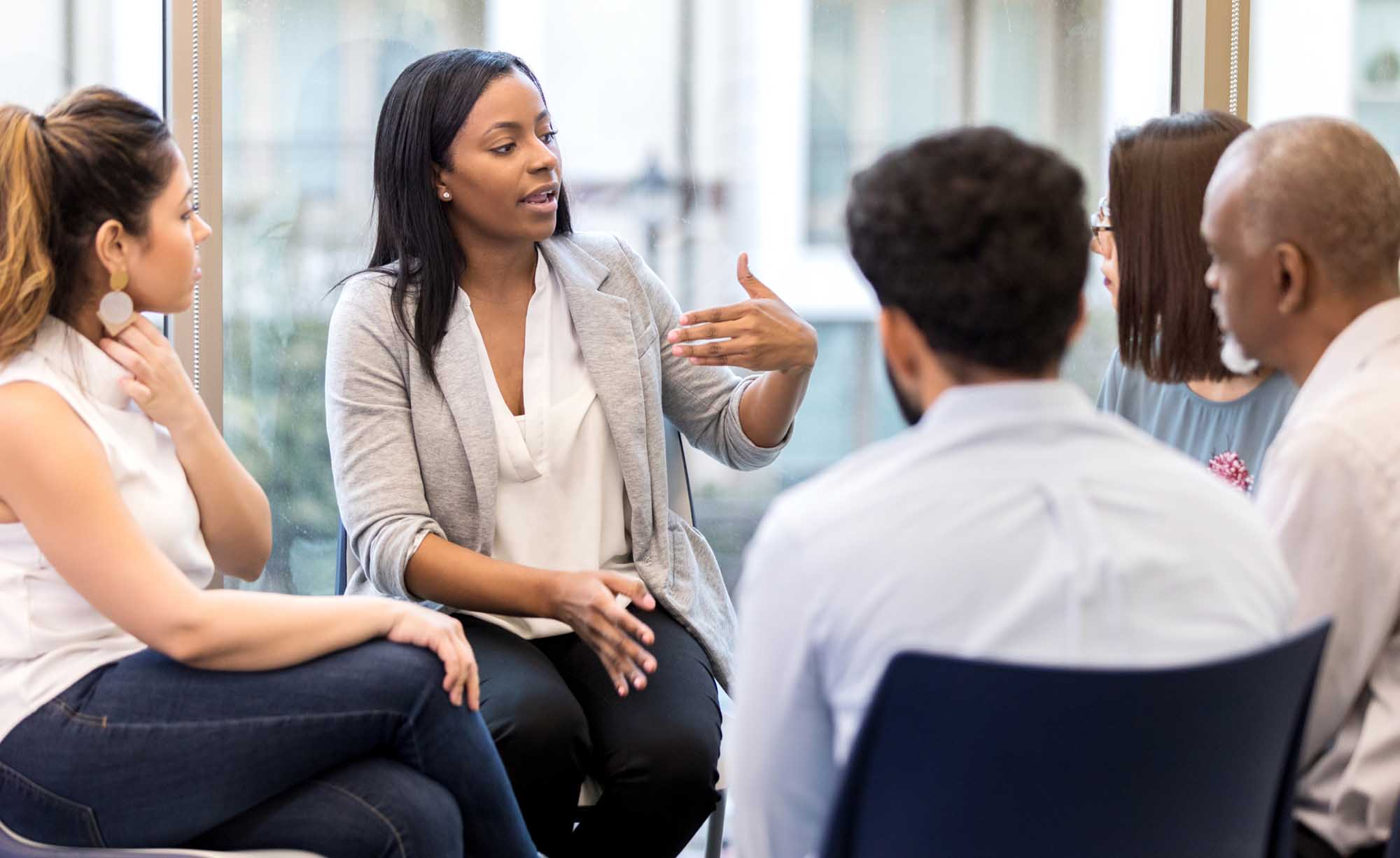Transracial & Transcultural Adoption: Preservation, Policy, and a Personal Perspective
Adoption Advocate No. 128
Over the past century, transracial adoption in America has become more and more common. In this issue of the Adoption Advocate, Alexis Oberdorfer shares about the history of transracial adoption and shares her personal experiences with both transracial and transcultural adoption. Drawing from her career in child welfare, Alexis provides insights to both professionals and parents with suggestions for ways they can honor children’s heritage and give them opportunities to explore their cultural identities.
In 1948, white parents in Minnesota adopted a black child and were the first recorded transracial adoption in the United States1. The following year, novelist and winner of Pulitzer and Nobel prizes Pearl S. Buck began an adoption agency focused on placing children through transracial and/or intercountry adoptive placement. Buck, an adoptive mother herself, had a wide impact upon the culture through her writing, and many people in the United States were introduced to the idea of transracial adoption through her outspokenness on the subject.
Following our nation’s Civil Rights Movement, there was a change in transracial adoptions of black children into white homes: As integration increased so did the number of transracial adoptions. In September 1972, this practice resulted in The National Association of Black Social Workers taking “a vehement position opposing the placement of black children in white homes for any reason.”2 In the following two decades, the number of children in out-of-home placements grew significantly, and many children who could not be reunified needed permanency, for their own best interest as well as to relieve the over-taxed child welfare system3.
In 1994, the Multi-Ethnic Placement Act (MEPA) was enacted “to decrease the length of time that children wait to be adopted; to prevent discrimination in the placement of children on the basis of race, color, or national origin; and to facilitate the identification and recruitment of foster and adoptive parents who can meet children’s needs.”4 In 1996, MEPA was amended by the Small Business Job Protection Act, Interethnic Placement Provision (IEP), PL 104-188, section 1808. This amendment, commonly referred to as the Interethnic Placement Act (IEPA) eliminates any consideration of the use of race, color, or national origin when making placement decisions, unless it can be demonstrated that a same race placement is clearly in that child’s best interest. Further, IEPA imposes financial penalties on states that violate IEPA by using race, color, or national origin in making placement decisions. Comparable financial sanctions are not applied if states fail to diligently recruit families who reflect children’s racial and ethnic background5.
My Experience Growing Up in a Transracial Family
My lived experience began with my own adoption by a caring white family before the National Association of Black Social Workers took a stand against transracial adoptions. Adopted in Chicago and moving to Minnesota at a very young age greatly influenced my upbringing and culture. My family loved me deeply (and I them), and they intended for me to be racially and culturally connected.
In Minnesota, I was accepted in my neighborhood, a suburb of Minneapolis and Saint Paul that lacked racial diversity at that time. As any other child in our immediate neighborhood, I played together with friends, and we were welcome to come and go in and out of each other’s homes. Some kids were adopted, others not—some were adopted from other countries, some domestically, some through same-race adoption, while my brother and I were transracially adopted. Utopia? Maybe.
I recall that as a pre-school-aged child, I clearly recognized racial differences. I wanted my hair to be long and blond, rather than short and curly. I would straighten my curls out, only for them to recoil. On occasion, I would wear a towel on my head as I imagined what it would be like to have long straight hair. I wondered how I could make my appearance reflect that of my mother’s. As I entered elementary school, I began to increasingly feel that I didn’t fit in, not because of culture, but because of race. My hair was kept short, but I wanted braids, twists, bows, and beads. Hair care may sound to some a trivial issue in parenting transracially adopted children, but trust me, it is a big deal. Hair care is a bellwether for positive self-esteem. When your skin color stands out and your body type does not lend itself to the trendy jeans, hair care is just one more of many things that complicate self-image. We all have had a bad hair day or a bad haircut, but think about how that impacts self-esteem when it is daily for a school-age child. You simply want to fit in with your peers, which is appropriate developmentally, but everything you are experiencing makes you feel like you stand out, and not in the way you would like. It was a journey that I had to walk and learn for myself—how to care for my hair and understand my body type and self-image as I grew older. It wasn’t because my parents didn’t try or want to help when I brought it up, but the fact is that they weren’t fully equipped to do so—nor did they have the benefit of the knowledge and resources available to families today.
My Experience Raising a Transcultural Family
As an adoptive parent to black children from another country—with hair that is a very different grade than mine and much shorter than my hair was as a child, or that of my biological child—I knew from my own personal experiences that we would need to step up my parenting knowledge to meet our children’s needs. From week one of her being in our care, I quickly had to make sure that our daughter’s hair was appropriately cared for. I went to the store to look at what products were available that would support her hair care needs. I practiced different styles and techniques so she is as cute as can be, and I feel like I did her proud. We carve out one-on-one time every weekend, and she decides if she wants puffs, twists, or braids. There were some challenges with our son, too, but they were not so far off from what we had already experienced from parenting our birth son (and oldest child).
While our children see two parents of the same race every day, we still feel it is important that our children have books, toys, dolls, crayons, playmates, movies, etc., that reflect them. We want to give them positive imagery so they do not feel isolated. We do this to support their self-esteem and identity development. Every family parenting a child of another race or culture should strive for this.
When it came to art in our home, we intentionally sought out a map of their country and a painting of a beautiful woman from a local artist because it is important to us that they know that we love where they came from and want them to develop a sense of identity and pride. These are not one-time or occasional acts, but something we have incorporated into our parenting mindset to live out regularly. It is who we are as a transcultural family. Sadly, our children have lost their endearing accents, but we want them to preserve positive memories of their life in their country of birth. We want them to stay connected to the people who cared for them before us, we want them to recognize their flag, and we want them to learn folk tales through books we bought abroad. While the adoption of our children is not transracial, as my own adoption was, it is trans-cultural.
Like all parents, we guide our children morally, ethically, academically, socially, behaviorally, and in a variety of other ways. As parents of adopted children, we found that some areas needed a tremendous amount of outside support—which our oldest child did not need—due to their history of trauma before coming to live with us. I could relate to the sense of loss that my children had experienced, which helped at times when they did not have the words to express their emotions. While our children are resilient, we have come to learn that trauma affects every child in different ways— their trauma histories are unique in how they play out for each of them, despite their shared history. As parents, we adapt to the individual needs of our children.
As parents to three beautiful black children, we understand what it means to be black in society, and we work with all of our children to help guide and give them the skills they will need to understand and face the many micro-aggressions they will experience. When our oldest son wanted to hang out with his friend in the city last summer, he knew I was concerned. He asked, “Mom, what’s the worst thing that can happen?” Without hesitation I replied, “You could die.” “Why did you have to go there?” he wanted to know. Sadly, whether my child is biological or adopted, raising a child of color, I cannot ignore the realities that he needs to take to heart as a person of color living in a society where race does matter. Some of his friends, who are white, do not have to think about the possible implications in the same way, nor do their parents—but parents with children of a different race cannot ignore this reality because pretending otherwise can put them in harm’s way.
In my formative years, my culture was heavily shaped through my parents, school, and faith community. As a young adult, I sought a broad range of friends of different races and backgrounds, and took advantage of opportunities to travel and explore other cultures and other countries to better understand who I am. I am incredibly strong in claiming my identity, and I have a rich culture that draws from many influences. It represents the community I grew up in, the community I was born in, and the communities I have grown to love along the way. Without permanency, love, and support of a family, I suspect I would not have been able to explore my identity, culture, well-being, or even to critique the choices of my parents.
I hope that someday my children will understand that safety is what brought them into our care, and will appreciate that, though we did not get everything right, we adopted so they would know permanency and embrace all the families (birth, foster, and adoptive) that have loved and cared for them along the way. And should they, too, critique how they were raised. I hope that they will feel that we equipped them with the knowledge, experiences, and resources to understand and embrace their race and culture. At the end of the day, we hope that they will have pride in their racial and cultural identity, and appreciate both their country of birth and their country of residence, as well as the diverse cultures that helped shaped them.
How Prepared Is Your Family?
I would ask that people entering the journey of adoption and those who have chosen to transracially or transculturally adopt deeply assess where you are and what you can change that will influence the life of a child you will be, or are, parenting. Ask yourself:
- Will your child have other people in the community that look like them or will they be isolated?
- Do you have the ability to see your child as more important than you, enough so as to push you outside of your comfort zone?
- If you do not look like your child, how will you help your child develop positive self-esteem and racial identity?
- What activities do you genuinely engage in as a parent on a daily, weekly, monthly, or yearly basis that reflect your child’s ethnic origin, to help promote a connection?
- Do you have other people that can be adult role models or mentors to your child who are people of color of the same racial or ethnic background as your child?
- What is your knowledge of your child’s ethnic history, and how will you teach it?
- When your child no longer looks like a child and is in the community without you, will they know how to respond to situations that involve micro-aggressions, implicit racial bias, and other forms of racism?
- Will your child develop the capacity and be equipped to code switch?
A Message to Adoption Professionals
When it comes to the topic of transracial/transcultural adoption, a family’s training and understanding begins with adoption professionals. It is imperative for professionals to deeply assess their own multifaceted identity and culture, understand what shaped their development, and critique how that influences their practice and decision-making.
What we ask of adoptive families also holds true for professionals. Have you actively engaged in experiences of cultures or communities that are different than what you are accustomed to? Regardless of the amount of time or depth of that experience, what did you learn? Were you uncomfortable, did you feel like you didn’t fit in, and might this help you better relate to transracial adoptees? Do you have, or can you develop, relationships with individuals of another race, another culture, or with individuals who are transracially or transculturally adopted so you can better understand their first-hand experiences? While a person of another race or culture may help us understand common experiences or micro-aggressions a person may experience, it may not give us all the complex layers, including adoption. Another youth of color may experience a micro-aggression in a similar way to a transracial adoptee; however, what happens when the need to debrief with their parents arises? Will the parents understand the experiences as they debrief? Will they be able to support and guide them and help them develop the skills they will need to manage future experiences? We need to be cognizant of all the intersections that may play into a person’s experience as we actively listen.
Diversifying your own experiences and connections and conducting an honest self-assessment will foster and deepen your cultural humility and support your capacity to begin to understand the journey of adoptees as they develop their own racial and cultural identity.
Organizations, including local and regional adoption communities, should conduct an environmental scan to see what post-adoption resources are available to support individuals who were adopted and adoptive families formed through transracial/transcultural adoption. Here is a list of important questions adoption professionals should consider:
- Are support groups available for adopted children, youth, young adults, and parents where topics relevant to transracial adoption are addressed?
- How can you connect an adoptive parent to another parent who may act as a great resource to a family who is newly struggling?
- What resources, information, and workshops on race and culture related to foster care and adoption do you have access to? Which of these resources can you connect families to?
- Are you and your adoptive families connected to camps that promote specific cultures and allow kids to discuss their thoughts and feelings about being transracially or transculturally adopted? Are the adoptees who work with your agency connected within a peer community?
- In what ways can you incorporate the experiences and voices of transracially and transculturally adoptees?
Adoption professionals should educate and support families before and after a child is placed for adoption. This will help families not feel isolated and make sure they have strong support and post-adoption resources. This support enables adoptive parents to bridge the journey for their child’s positive identity formation that recognizes their birth cultural and racial identity.
Closing Thoughts
U.S. public policy supports parent preparation that is non-discriminatory. For many families, pre-placement training and preparation is just a start to what they will need in the long journey of parenting. Additional education and support to address race and culture issues are needed for many adoptive families—throughout their adoption process and to continue to support the development of their adopted child throughout their life.
Families need to be pro-active and open-minded, understanding that raising a child of another race or culture takes more than love. They must be willing to actively seek resources to understand how to prepare and support children to become adolescents and adults who are prepared to participate in community as a person of color.
References
- Herman, E. (2008). Kinship by design: A history of adoption in the modern United States. Chicago, IL: University of Chicago Press.
- The National Association of Black Social Workers, Position Statement On Trans-Racial Adoptions https://cdn.ymaws.com/www.nabsw.org/resource/collection/E1582D77-E4CD-4104-996A-D42D08F9CA7D/NABSW_Trans-Racial_Adoption_1972_Position_(b).pdf
- Child Welfare League of America, United States Commission on Civil Rights, September 21, 2007 https://www.cwla.org/briefing-the-multiethnic-placement-act-minority-children-in-state-foster-care-and-adoption/
- U.S. Department of Health and Human Services, Administration of Children, Youth and Families, ACYF-PI-CB-95-23, October 11, 1995 https://www.acf.hhs.gov/sites/default/files/cb/pi9523.pdf
- Public Law 104-188 https://www.congress.gov/104/plaws/publ188/PLAW-104publ188.pdf



